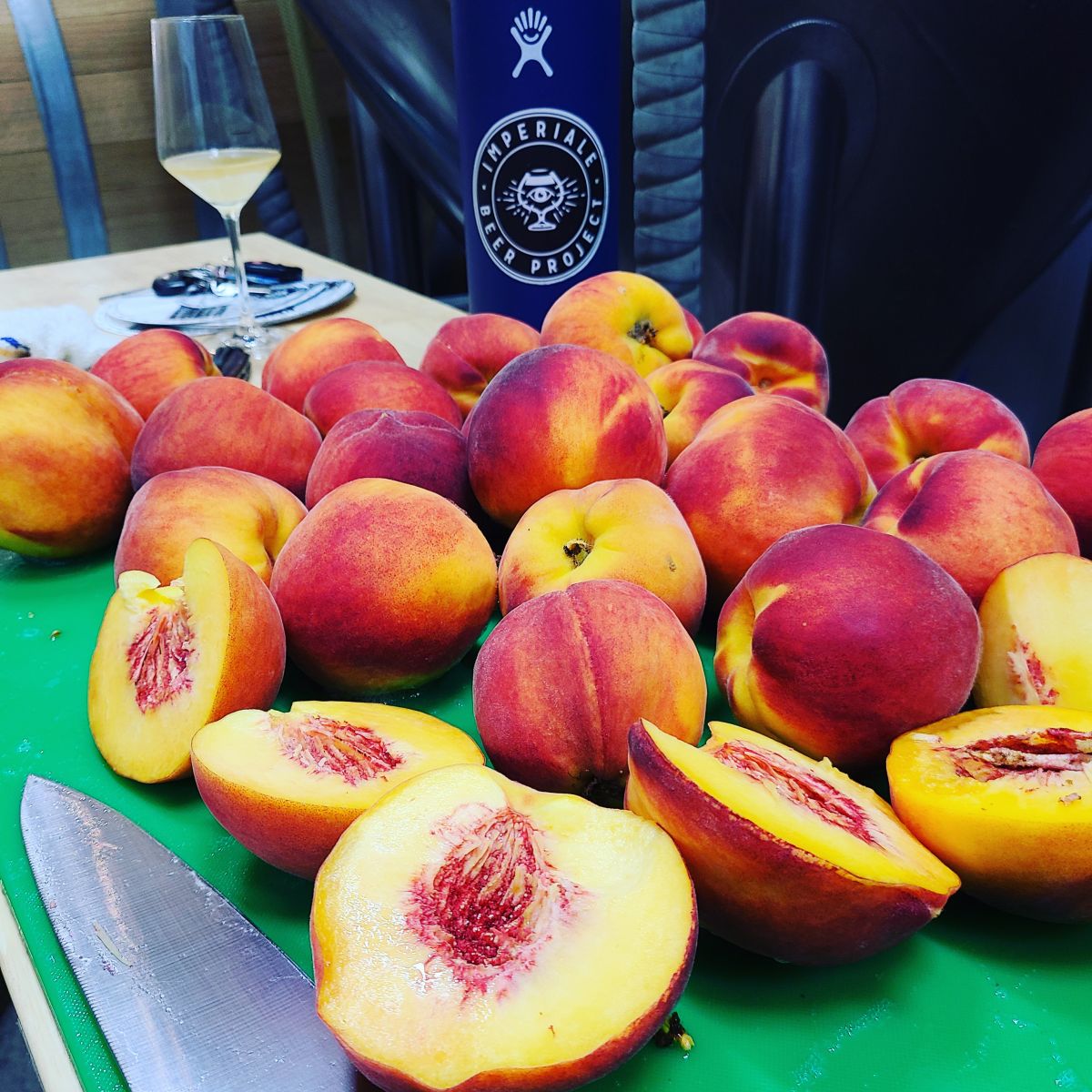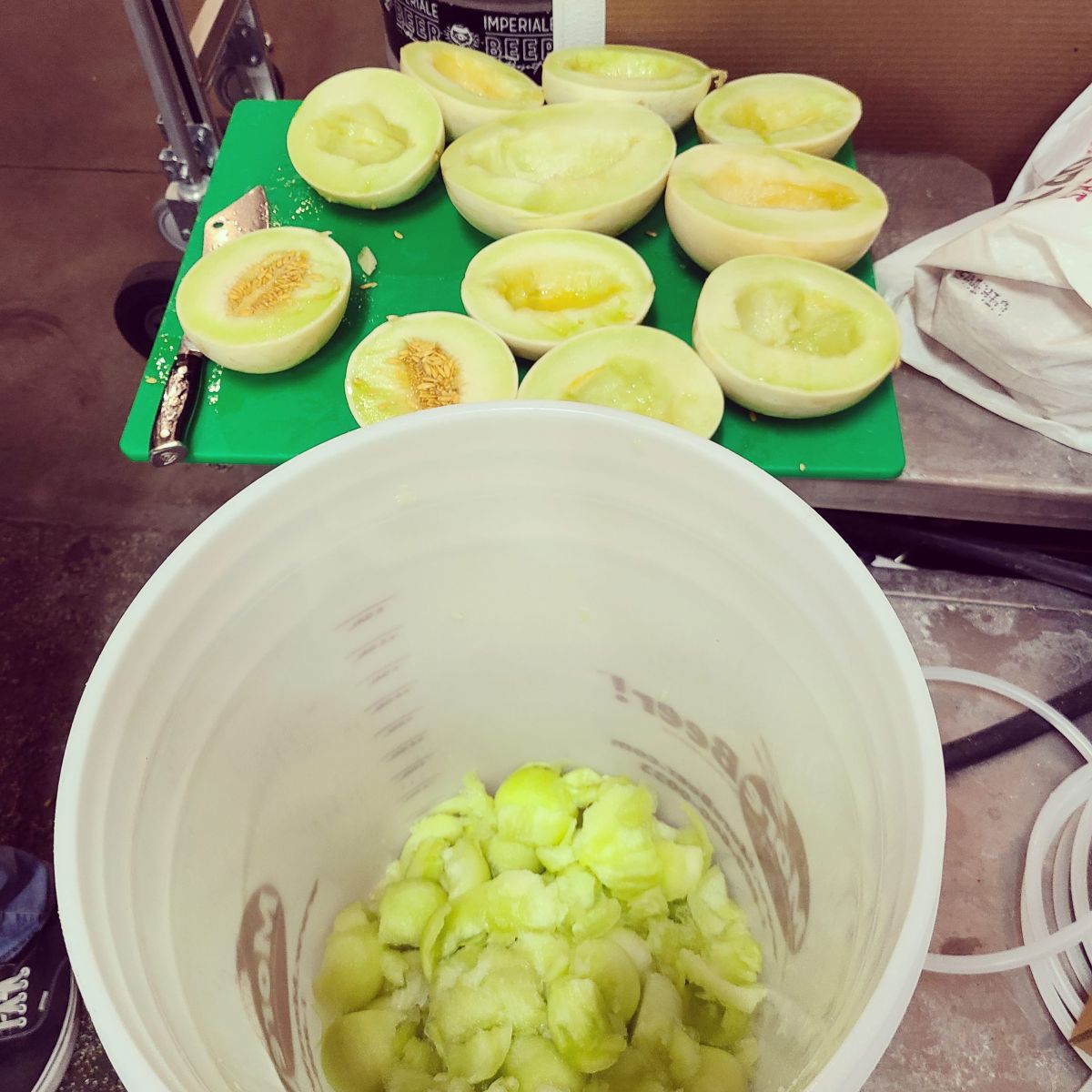By Vito Delucchi

My first memory of tasting a fruited beer was back in the late 90’s; it was Pyramid Brewing Co.’s Apricot Ale and I am not ashamed to admit that I thoroughly enjoyed it! The aroma and taste that the apricot brought to that wheat beer was pretty awesome and I found myself enjoying a few More! of them in that decade. It opened my eyes and palate to the wide world of fruited beers and for that I am thankful. Sure the Reinheitsgebot may not include fruit, but that’s no reason to be sour (pun intended) about adding fruit to beer. Utilizing natures candy, can not only bring some amazing flavors to your beer, it gives you another ingredient when Crafting Beer!
Quick Links:

When I hear the word fruit I immediately think fresh. Not to say you can’t make amazing beers using fruit extracts or canned fruit purees. But for the sake of this article I am going to just focus on working with fresh fruit. With that said, depending on your region you might have a few options open to you. First off the good old grocery store, most parts of the United States bring in seasonal fruit for their customers. Speaking of grocery stores, I know I said I am going to focus on fresh fruit. But in a pinch or out of season frozen fruit in bags found in the frozen section of the grocery store is not a bad option. Freezing actually has some benefits we will discuss later, but I digress. Another option, again depending on your region is a local farmers market. The great thing about a Farmer’s market is you typically get a great price on the fruit by cutting out the middleman. If you’re in an area that has a Farmer’s market, chances are you might be driving distance to the actual farms.

Being located in Northern California I am spoiled (Fruit pun not intended) by having some amazing farms a short drive from my house and the brewery. Nothing beats being able to pick the fruit yourself. It allows you to select ripe or under ripe fruit depending on the flavor profile you’re looking for. Not to mention it’s one of the cheapest ways to acquire fruit. The reason I say “one of” the cheapest is, you can’t get much cheaper than growing it yourself! If you’re lucky enough to grow your own fruit then you got the best of both worlds. It’s cost effective and you can select the fruit yourself. Speaking of selecting, let’s chat about how much fruit you need. My typical starting point is one pound of fruit per gallon of beer. The way you process it and the ripeness of the fruit you’re using will cause your mileage to vary, but this is a solid starting point.

In all my years of home & commercial brewing 99% of the time I have added fruit on the cold side i.e. during or post fermentation. I do have one recipe, a Margarita Gose that I add freshly squeezed lemon & lime juice during the whirlpool. Other than that, I’ve always added fruit in the fermenter. But let’s not get ahead of ourselves and jump into “adding” just yet. Before we hit the proverbial “fork in the road” let’s talk about freezing fruit. Earlier I mentioned freezing fruit has some benefits. Beyond the obvious of being able to store if for months after it’s picked or purchased, it also helps extract flavor by breaking down the cell walls of the fruit. The crystallization that occurs on a micro level from freezing helps with utilization. Unfortunately for me at the brewery I don’t have anywhere to freeze the several hundred pounds of fruit my batch size requires.
 |
Have any feedback on this article? We want to hear from you! Click here to contact us with any feedback. Or simply email articles@morebeer.com |
Now let’s get back to that fork in the road we talked about a moment ago. Depending on the path you choose, there might be no need to freeze. Aside from storing the fruit over time of course. This decision not only has an effect on the fruit flavor, it can also strike to the very core of everything you were taught as a brewer. Unless of course we’re talking about adding fruit to a mixed ferm beer? Then it’s just a matter of flavor preference. Regardless, you can either work with fresh (and or fresh frozen) or pasteurized the fruit. Before moving forward let’s discuss the pasteurization process and its flavor impact. Remember those canned fruit purees I mentioned earlier? Those have been flash pasteurized and it definitely changes the fruit flavor. Some people, myself included depending on the beer style and what I am going after actually prefer that flavor. The best way I can describe it is “Jammy”. Pasteurization is essentially heating the fruit up to kill any bacteria. It’s really all about time and temperature. The lowest temp you can pasteurize at is 63 °C (145 °F). At that temp is takes about 30 mins to pasteurize and at 72 °C (162 °F), it takes about 15 seconds. I wouldn’t recommend going any higher temp than that and either way it’s going to change the flavor of your fruit to have a sweeter jammy character. I typically use an immersion blender, but any household blender can work. Then I will constantly stir the fruit puree I made and set the heat on the lowest possible setting and monitor the temp with a thermometer. You definitely don’t want to get any scorching, hence the constant stirring.
.jpg)
So what if you’re after that fresh fruit taste and aroma but don’t want the jammy character? Are you destined to infect your clean fermented beer? Not necessarily! As I previously mentioned, I recommend adding fruit during or after primary fermentation. Within the first 48 hours of beer fermentation you have two things that will greatly help ward off any infection. The pH drops and alcohol is created, both of these help create a less than favorable environment for bacteria. So you got that going for you, but you can’t simply throw caution to the wind and toss the fruit in. Well you could…but I don’t recommend it.

I recommend soaking the fruit in Star San or a light sO2 solution prior to cutting or blending them. That will kill any bacteria on the outside of the fruit. Obviously rinse the fruit of any dirt etc prior to soaking or processing etc. as well. Speaking of the outside of the fruit, which brings a good flavor topic up. If you wouldn’t eat the outside or inside for that matter of the fruit don’t use it in your process. For instance the rind of a watermelon tastes sour & bitter and will add that flavor to your beer, so don’t use it! Same goes for things like citrus, stone fruit etc. If you wouldn’t eat it when you enjoy the given fruit, don’t use it in your beer.

Now let’s talk about further processing and adding the fruit. If you went the pasteurization path you made a puree and it’s as simple as sealing it up letting cool and then adding it to your beer. If you choose the fresh fruit path you really need to think about the vessel your working with. For instance a glass carboy typically has a small mouth and it’s pretty hard shoving halved large peaches in it (believe me I’ve tried). If you’re using a conical fermenter those big chunks of fruit might clog up your dump valve. So be sure to think about your next step given your equipment. If you can, it might be a good idea to use a hop bag or something similar to keep the fruit from getting sucked into your racking arm etc. Last but not least let’s talk about time on fruit. Again your equipment can play a big part in this decision. For instance at the brewery I like to add the processed fruit to a separate vessel that I can sanitize and purge of oxygen and then circulate the beer through the fruit until I reach the desired flavor profile. This can take a few hours or even as long as 48 hours depending on the variables (fruit ripeness, temp of the beer etc). If I am making either a pasteurized or unpasteurized puree I will typically add it directly to the unitank and rouse the tank (push cO2 from the bottom) every 24 hours or so to help extract flavor. Then drop the sediment out before letting it condition. For fruited mixed ferm beers I typically go for a More! rustic approach and leave the fruit halved or quartered and let the beer rest on it for several weeks or months. Either way you choose to go just be sure to taste the beer often and think about your next steps. I hope this article helped you in fruit beer adventures. Cheers!
 |
Have any feedback on this article? We want to hear from you! Click here to contact us with any feedback. Or simply email articles@morebeer.com |
All contents copyright 2024 by MoreFlavor Inc. All rights reserved. No part of this document or the related files may be reproduced or transmitted in any form, by any means (electronic, photocopying, recording, or otherwise) without the prior written permission of the publisher.